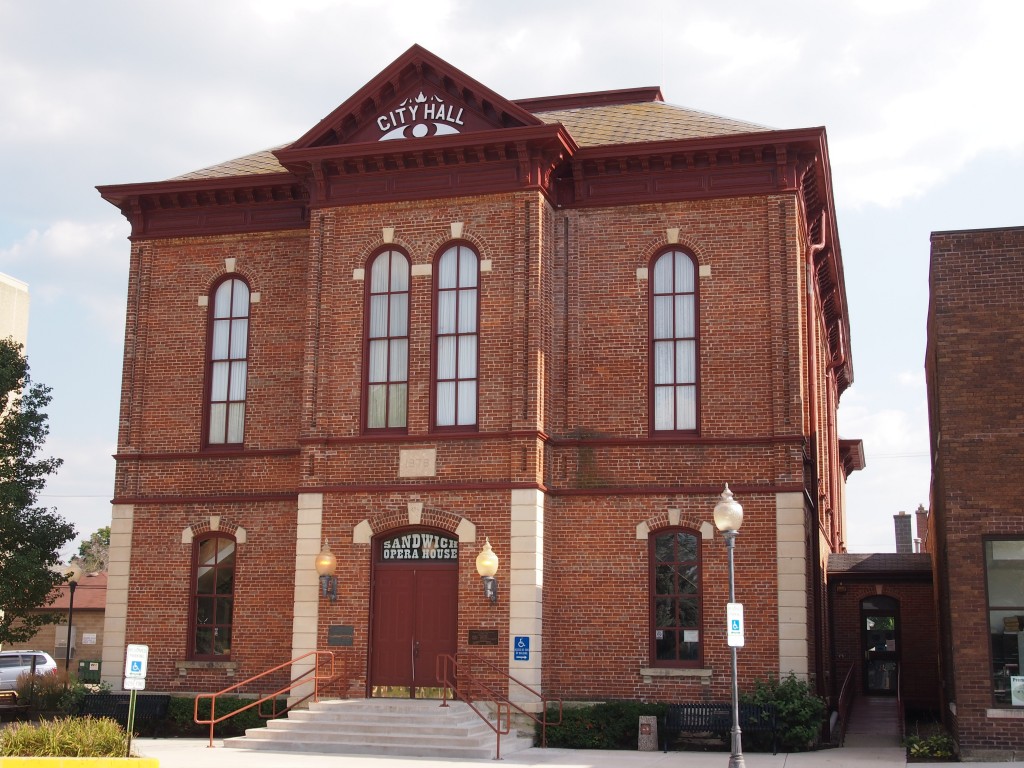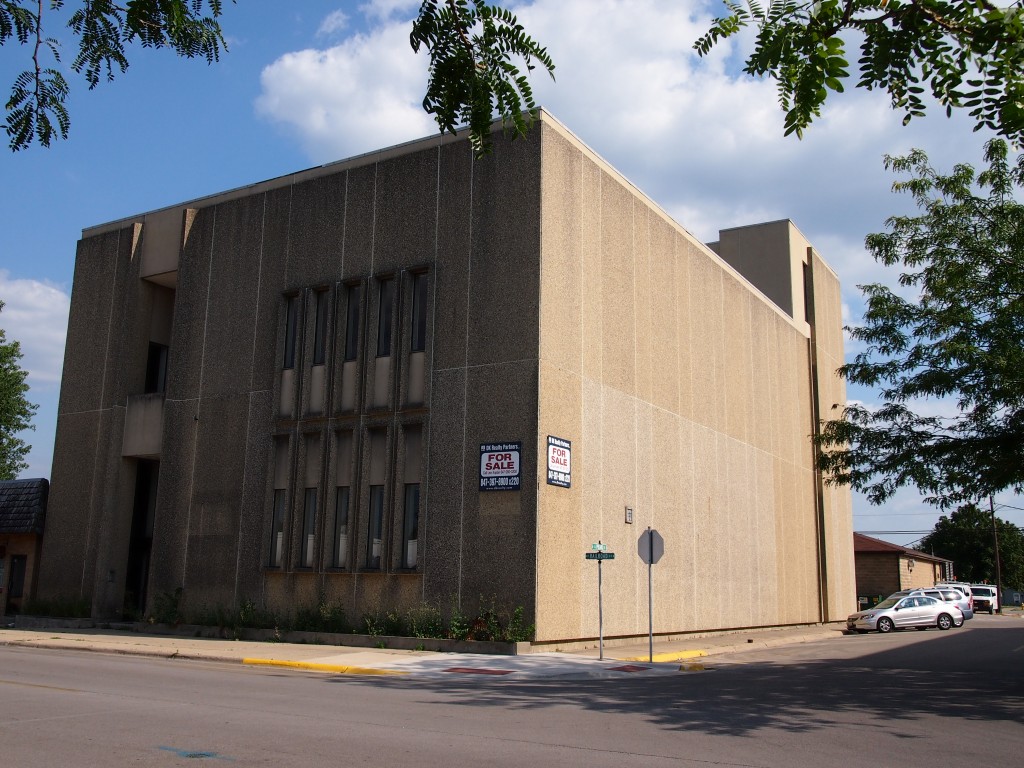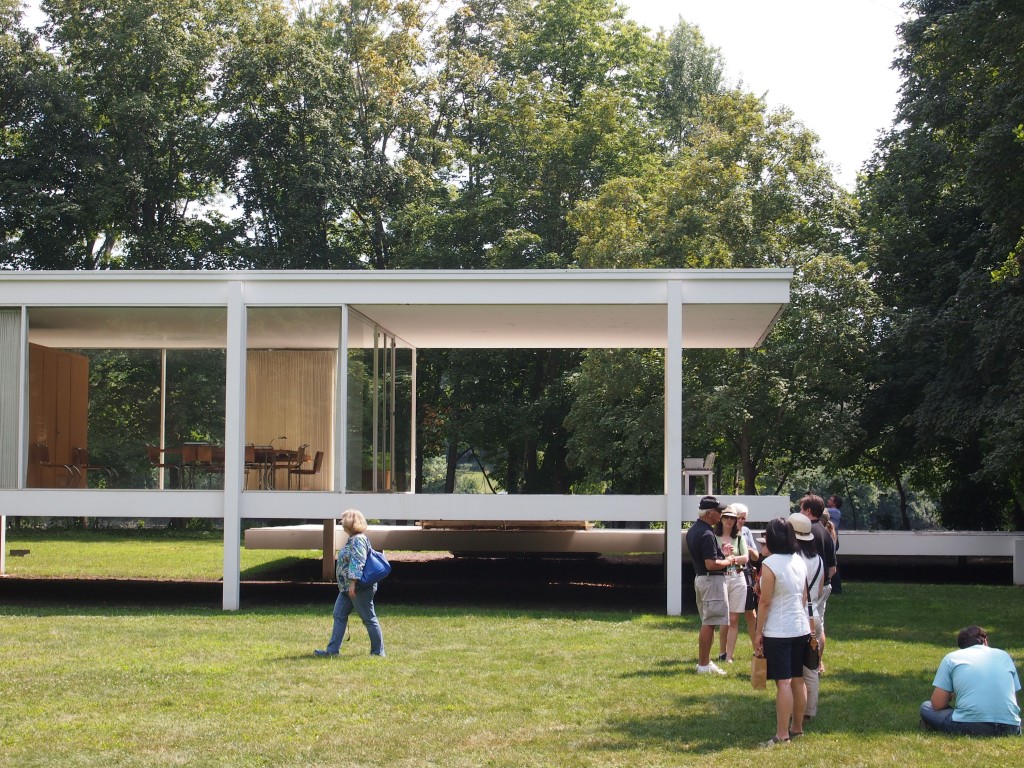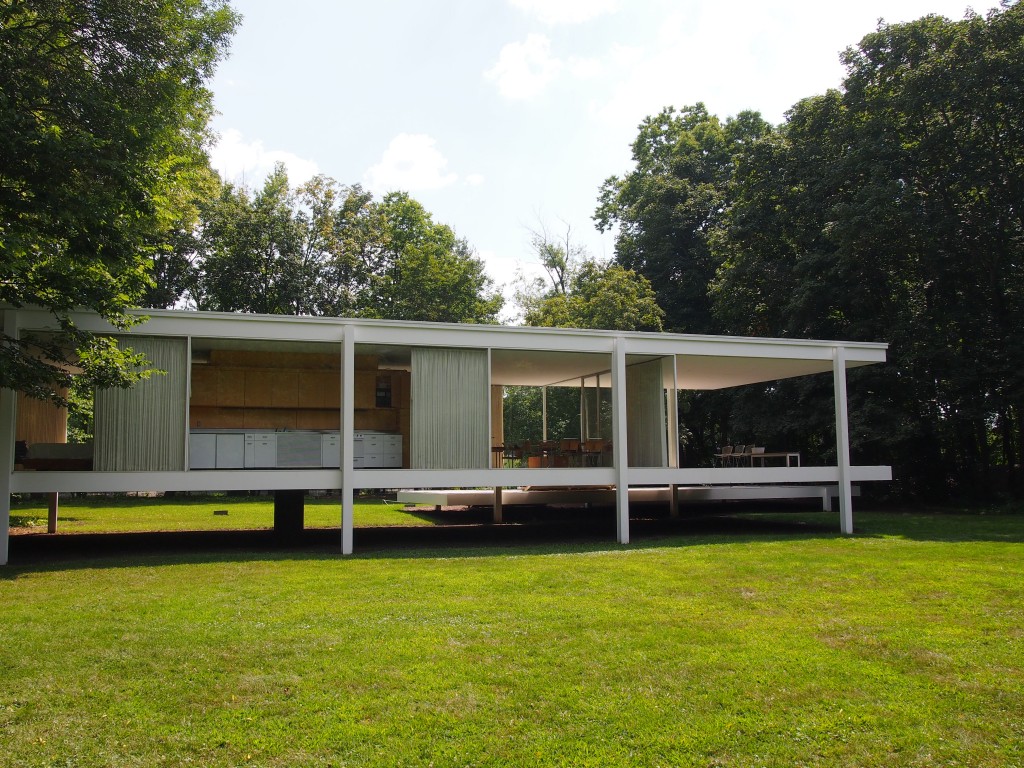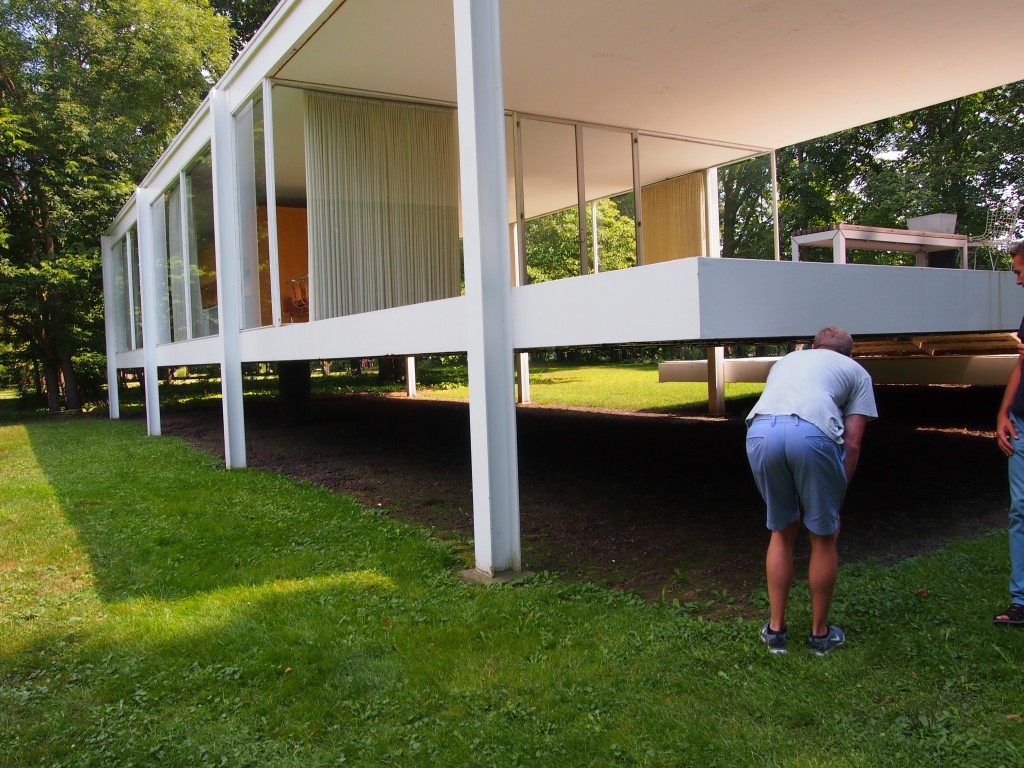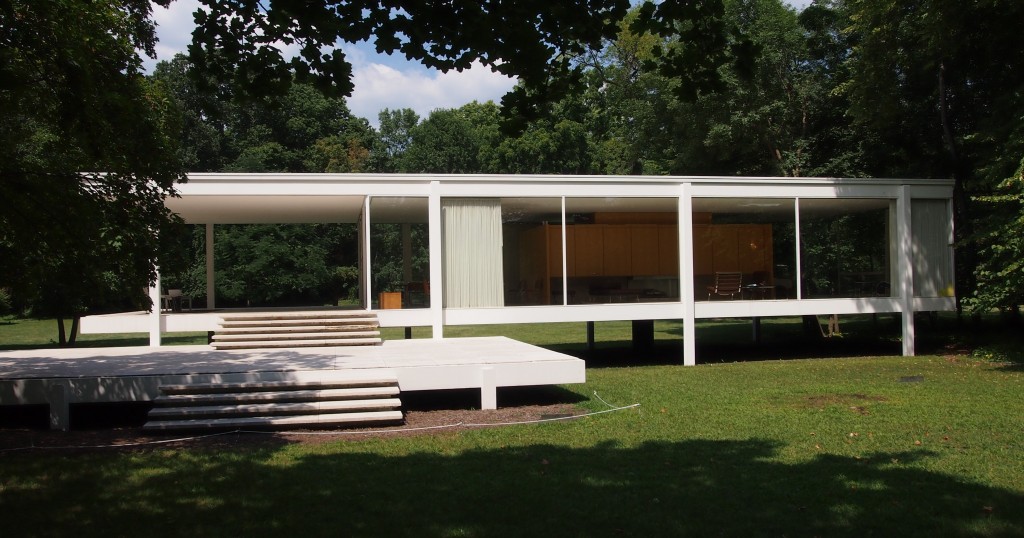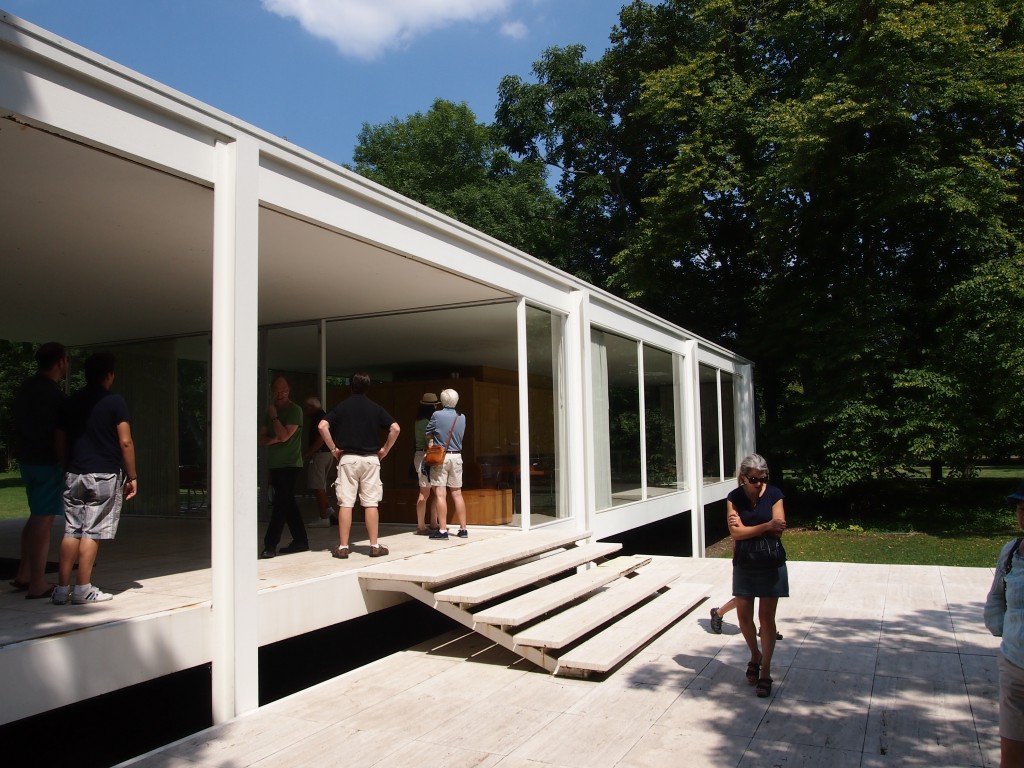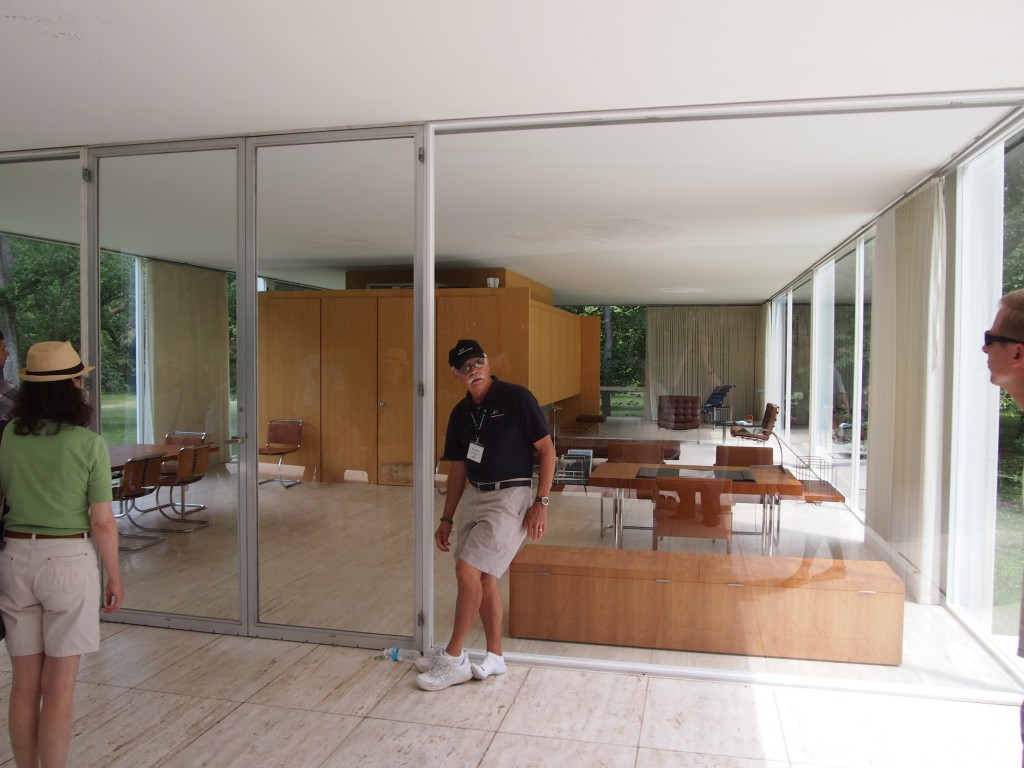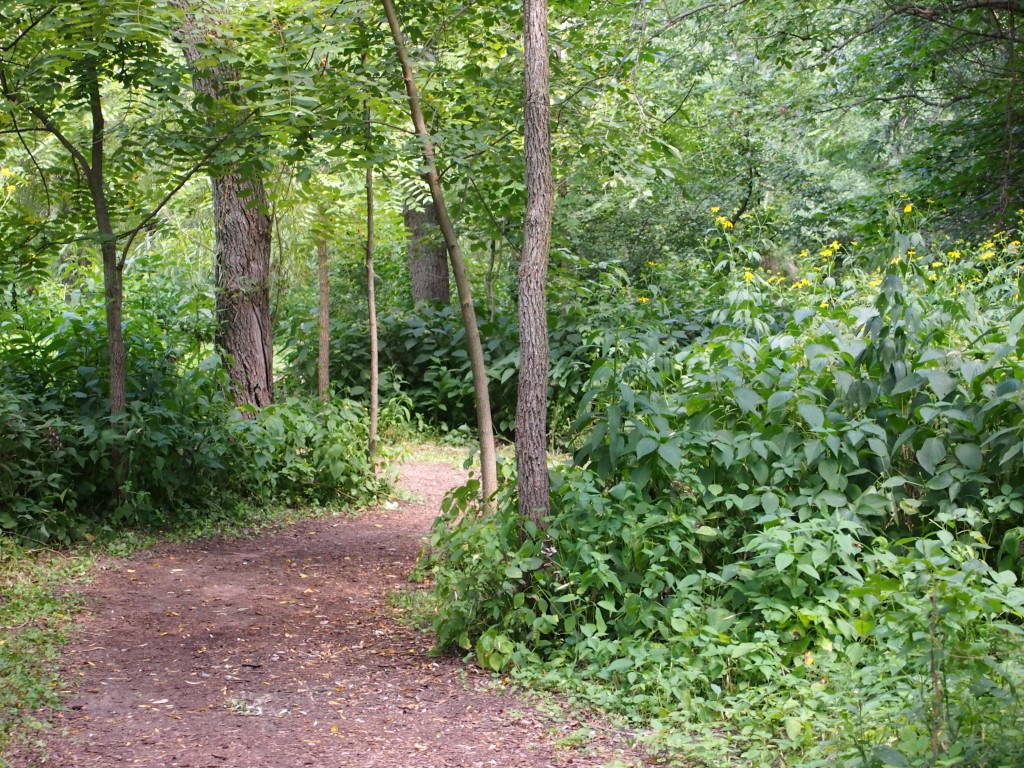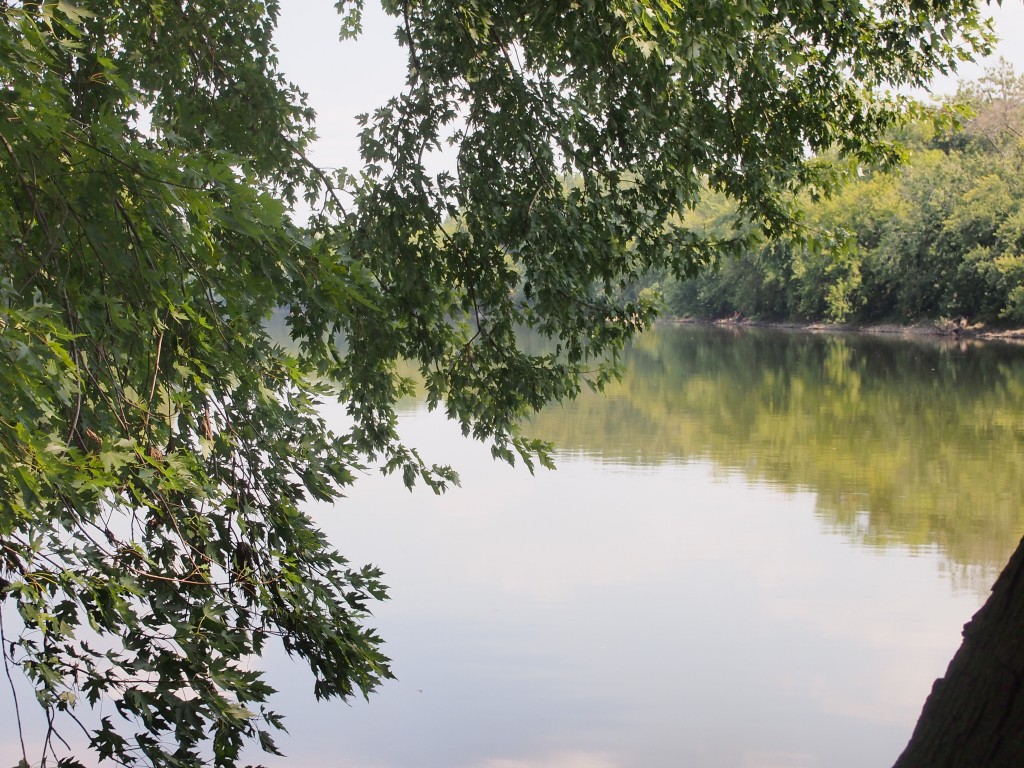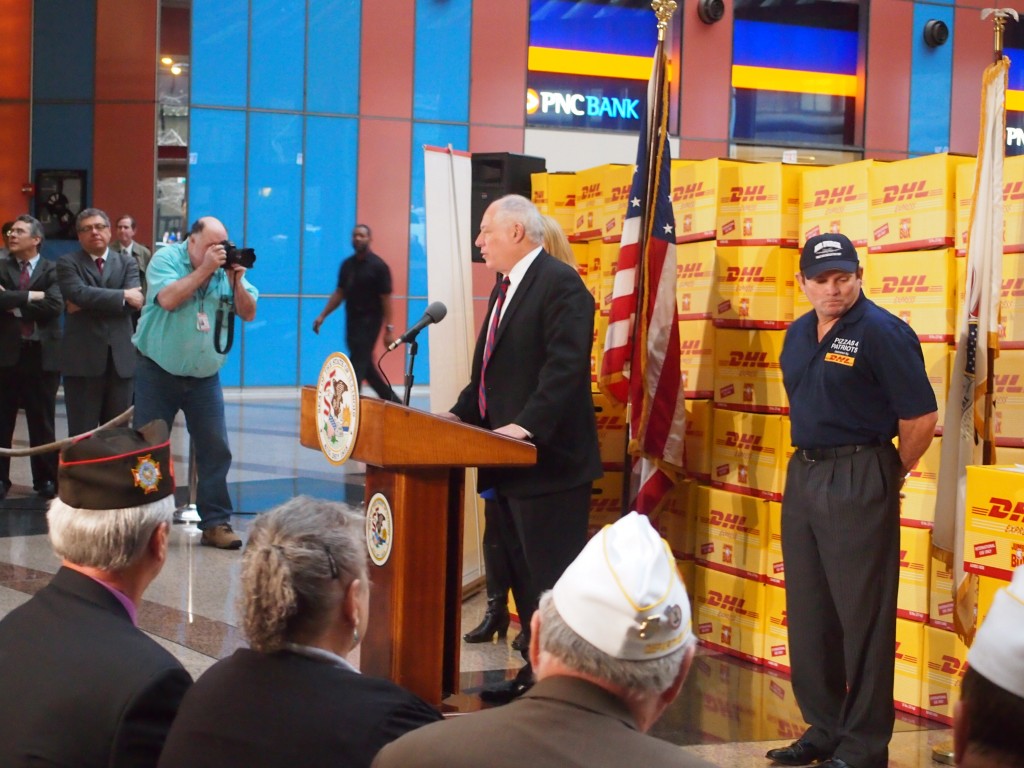About three years ago on the way to Springfield, we stopped in Atlanta, Illinois, which isn’t far from I-55 but which used to be right on U.S. 66. These days that means there’s enough nostalgia traffic – and probably local regulars – to support the revived Palms Grill Café. We ate there three years ago, only a short time after it re-opened. Some years before that an artist named Steve Estes painted a mural dedicated to the original joint across the street.
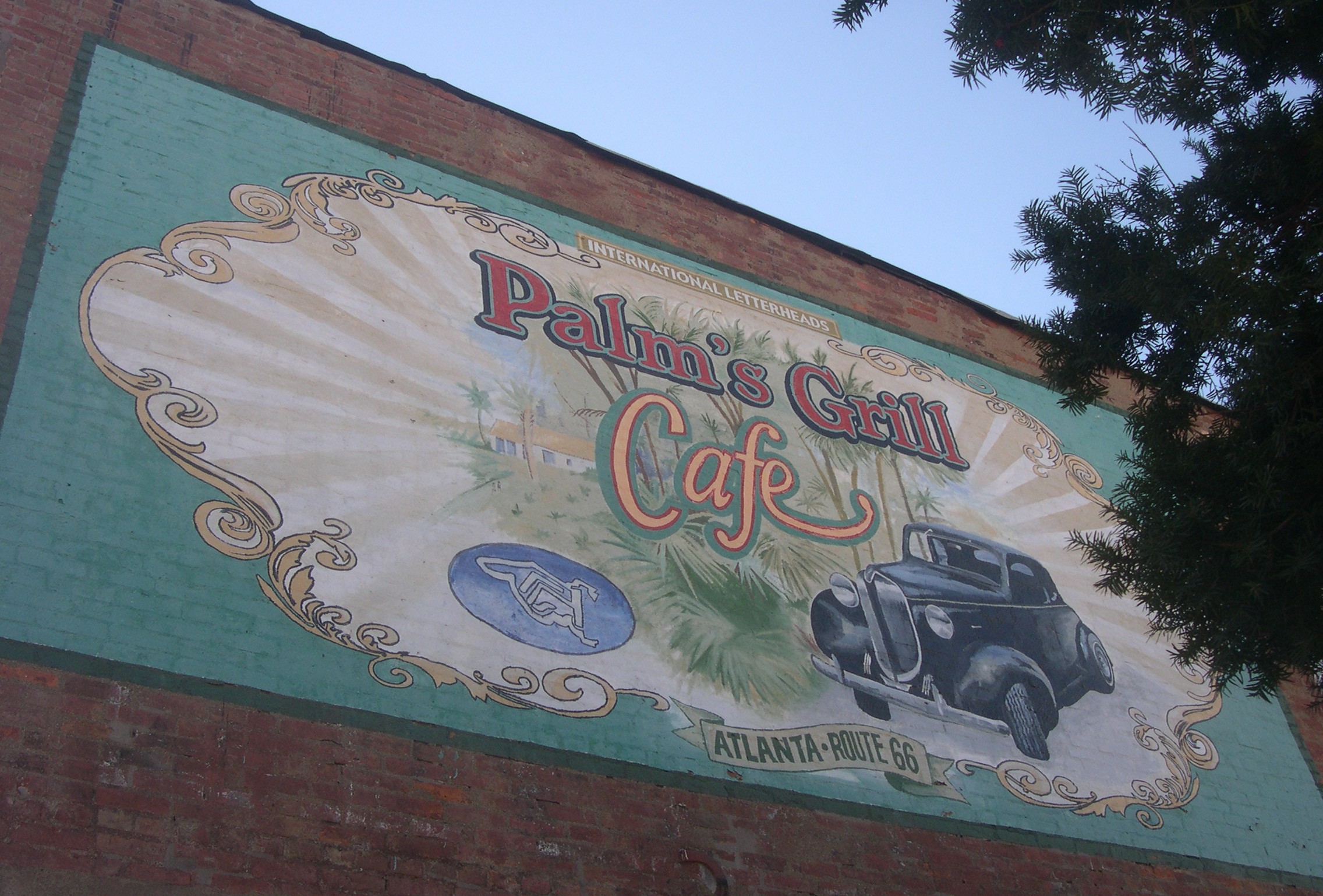 A helpful sign under the mural says: “In its early days, weekly dances and bingo nights accompanied the blue-plate specials served at the Palms Grill Café. The “Grill” was also Atlanta’s Greyhound bus-stop. You just turned the light on above the door if you wanted the bus to pick you up. Located directly across Rt. 66 from this mural, the Palms Grill Café served Atlanta’s citizens, as well as a steady stream of Rt. 66 travelers, from 1936 until the late 1960s.
A helpful sign under the mural says: “In its early days, weekly dances and bingo nights accompanied the blue-plate specials served at the Palms Grill Café. The “Grill” was also Atlanta’s Greyhound bus-stop. You just turned the light on above the door if you wanted the bus to pick you up. Located directly across Rt. 66 from this mural, the Palms Grill Café served Atlanta’s citizens, as well as a steady stream of Rt. 66 travelers, from 1936 until the late 1960s.
In his design of the “Palms Grill Café” mural, Steve Estes of Possum Trot, Kentucky, captured the intent of the “Grill’s” first owner, Robert Adams, an Atlanta native, who named it after a restaurant he frequented during trips to California. The mural was completed in June 2003 during the “LetterRip on Rt. 66” gathering of approximately 100 Letterheads in Atlanta.
The Letterheads are a group of generous and free-spirited sign painters from across the United States and Canada who are interested in preserving the art of painting outdoor signs and murals.
Just down the street from the mural is a small park with a handful of memorials. This stone caught my eye.
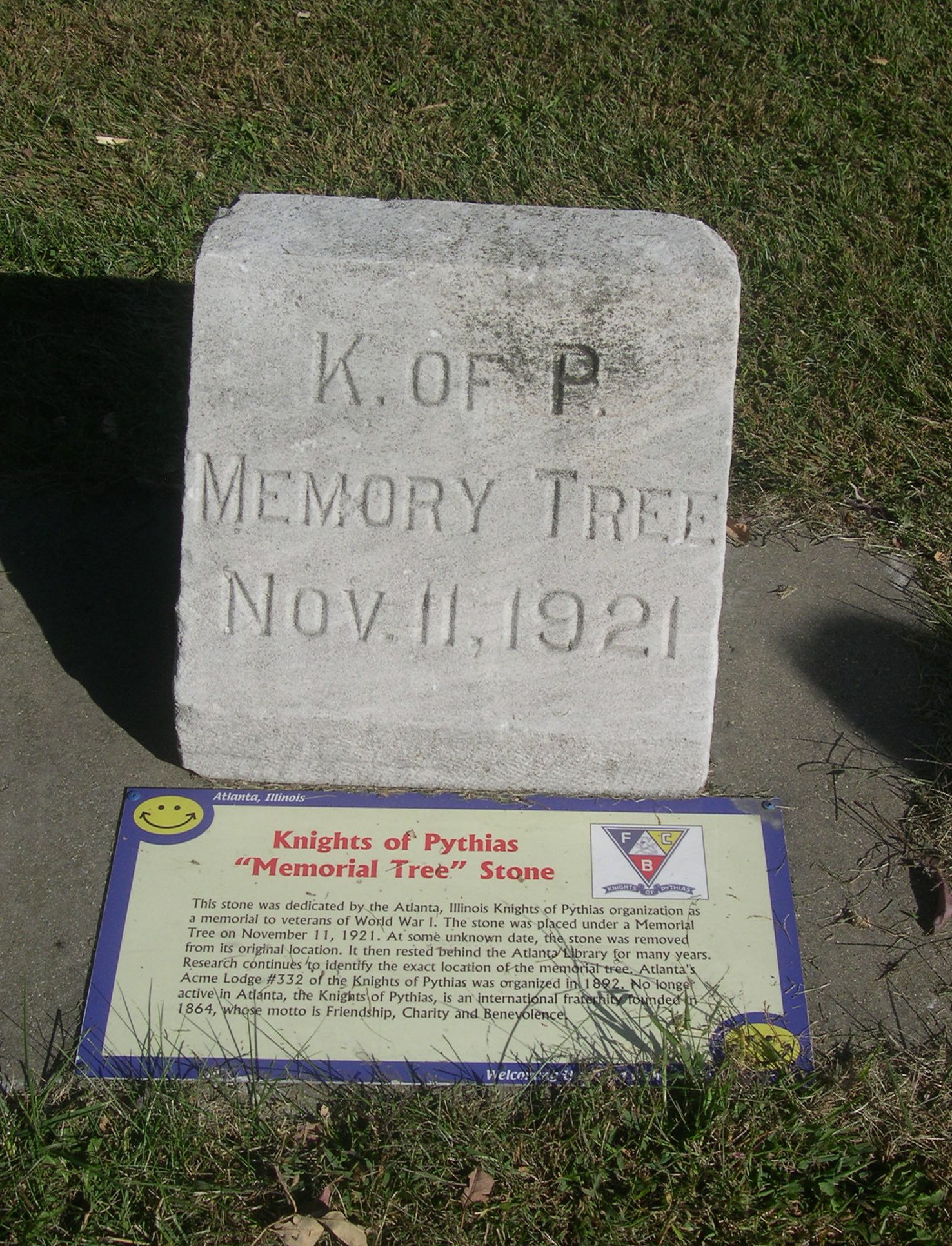 The modern sign says:
The modern sign says:
Knights of Pythias “Memorial Tree” Stone
This stone was dedicated by the Atlanta, Illinois Knights of Pythias organization as a memorial to veterans of World War I. The stone was placed under a Memorial Tree on November 11, 1921. At some unknown date, the stone was removed from its original location. It then rested behind the Atlanta Library for many years. Research continues to identify the exact location of the memorial tree. Atlanta’s Acme Lodge #332 of the Knights of Pythias was organized in 1892. No longer active in Atlanta, the Knights of Pythias, is an international fraternity founded in 1864, whose motto is Friendship, Charity and Benevolence.
Can’t remember which tree was planted by the Knights of Pythias, eh? Just goes to show you that no matter how fervently one generation wants later ones to remember something, they probably won’t. Or if they do, it’s a matter of chance as much as anything else. Then again, you can also make a reasonable argument along the lines of, Who cares which tree a long-gone fraternal order planted in an obscure town in the heart of North America in the early 20th century? Really important things will be remembered. (Except that they usually aren’t. Except by historically minded eccentrics.)
The Atlanta Library is an octagon dating from 1908. That’s a fine shape for a building. There need to be more of them. The exact reasons for choosing that shape for this library are probably lost, but I’d think it made for better lighting in an era when electric lighting, though available, wouldn’t have been as bright as later.
 According to the library web site: “Near the turn of the 20th century, the Atlanta Women’s Club established a committee with the purpose of erecting a Library building. Land located next to the tracks of the Chicago and Mississippi railroad, was donated to the City of Atlanta by Seward Fields, a descendant of William Leonard. Leonard was one of the contractors responsible for helping build the Chicago and Mississippi railroad… A beautiful bookcase dedicated to Seward Fields is still in use at the Library.
According to the library web site: “Near the turn of the 20th century, the Atlanta Women’s Club established a committee with the purpose of erecting a Library building. Land located next to the tracks of the Chicago and Mississippi railroad, was donated to the City of Atlanta by Seward Fields, a descendant of William Leonard. Leonard was one of the contractors responsible for helping build the Chicago and Mississippi railroad… A beautiful bookcase dedicated to Seward Fields is still in use at the Library.
Mrs. Martha Harness Tuttle… helped fund the erection of the Atlanta Library building. In 1908, she donated $4,000 – over half the funds needed for the new structure. The Library Board adopted plans for erecting an octagonal-shaped structure as prepared by architect Paul Moratz, of Bloomington, Illinois… The new building was dedicated on Saturday, March 28, 1908.



